To be very honest with you, I’ve never liked insects; in fact, I have a huge phobia to the point that I can’t go to sleep if there is any type of insect in my room.
Stupidly enough, I moved to a country with high cockroach populations, amongst many other insects that can fly, jump, and scurry quicker than you can keep your eyes on them. Luckily, however, my partner isn’t afraid to catch them and set them free outside our four walls.
Even though I’m not an insects biggest fan, they are still impressive animals, and without them, ecosystems worldwide would fail to exist.
If you know anything about the butterfly effect, you’ll know that without insects, small animals lose their food supply, and without small animals, larger animals would lose their food supply, and so on.
So, insects may seem tiny and insignificant at first, but these animals essentially maintain our world as we know it, and they deserve far more credit than what they’re given.
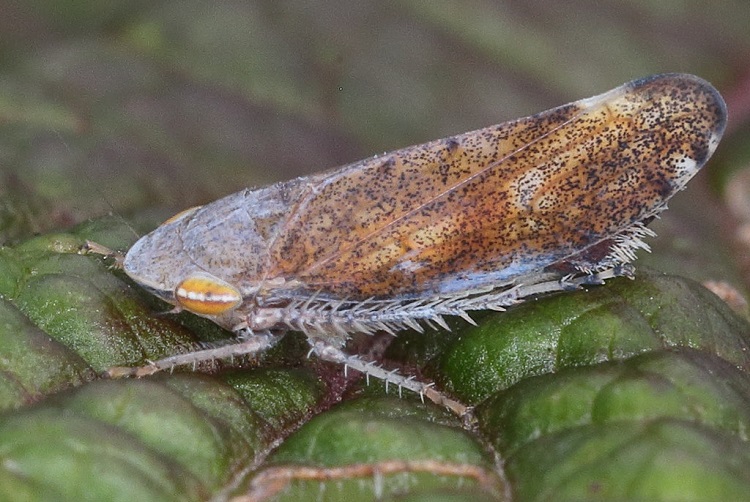
Etymology
The origin of word insect comes from the Latin word insectum, which means cut into or divided body, and as insects appear to have three sections to their body, the name fits perfectly.
You may also know insects as bugs; however, the word bug covers all terrestrial arthropods, so what you call them is really up to you.
Evolutionary History
The evolution of insects is confusing, to say the least, as insects were the first animals to make their way onto land. Some of the earliest insects, the beetles, evolved over 300 million years ago, with the fly dating back 250 million years, and then moths and wasps, which occurred roughly 150 million years ago.
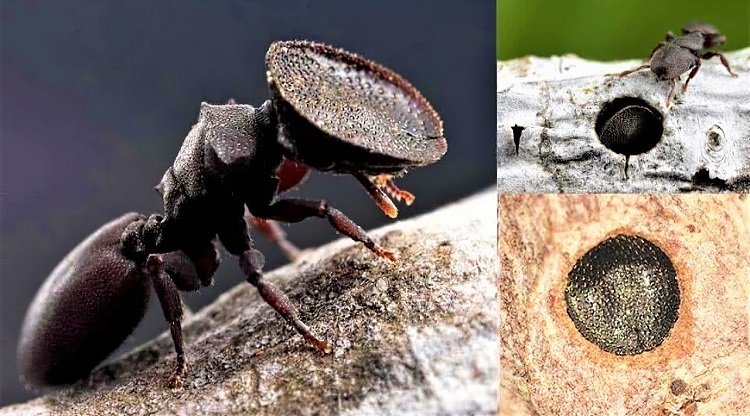
Even though bugs have been around long before humans, and I mean long before, many early insect species became extinct during the Permian-Triassic extinction (Permian period) event that wiped out 90% of the world’s species, including the dinosaurs.
I recently watched a documentary on the largest insect ever to exist, and included was a dragonfly with a wingspan of 70 centimeters. Sadly for this giant insect, it too became extinct, likely because of the Chicxulub asteroid and the volcanic eruptions and megatsunami that followed shortly after.
It’s crazy to think that the bugs were once that big. Could you imagine if these giant bugs still existed today? Their wings would be longer than the average human arm.
Although many species were wiped out millions of years ago, insects have thrived. They are now one of the most diverse groups of organisms on the planet, with many groups evolving successfully thanks to flowering plants that provide them with abundant and rich food sources.
Insect Taxonomy
Historically, we can divide insects into two groups or subclasses, wingless insects and winged insects, but we can further group them into five orders which include:
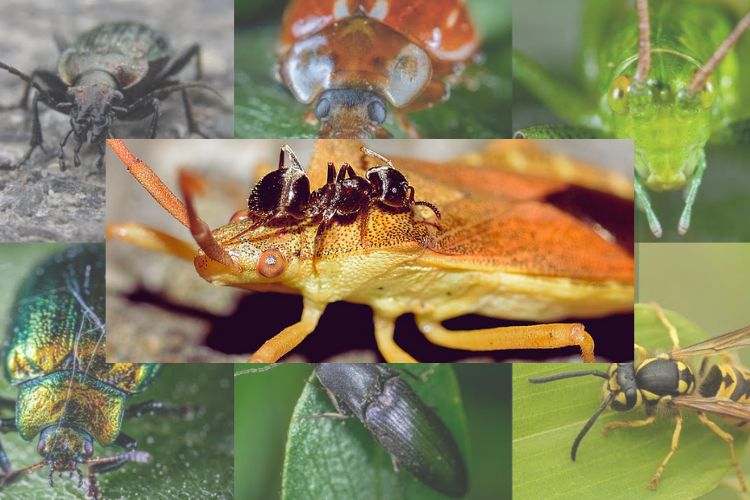
- Coleoptera – beetles
- Diptera – flies
- Hymenoptera – ants, bees, and wasps
- Hemiptera – cicadas and true bugs
- Lepidoptera – butterflies and moths
Insect Classification
All the different insects are confusing, right? Well, here is an example of insect classification to help you better understand how scientists classify each insect:
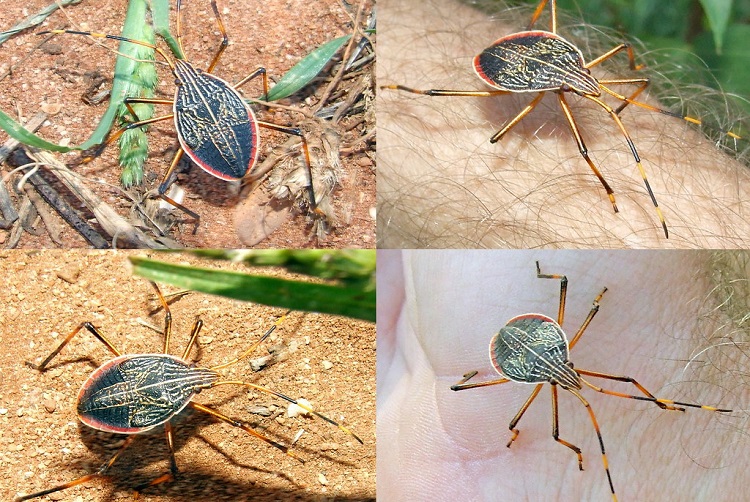
- Kingdom: Animalia
- Phylum: Arthropoda
- Class: Insecta
- Order: Diptera
- Family: Syrphidae
- Genus: Episyrphus
- Species: balteatus
Insects Species and Types of Insects
If I were to list every single insect species, I would truly be here for weeks, maybe even months, as there are almost one million insect species living today, let alone the ones that have gone extinct throughout history.
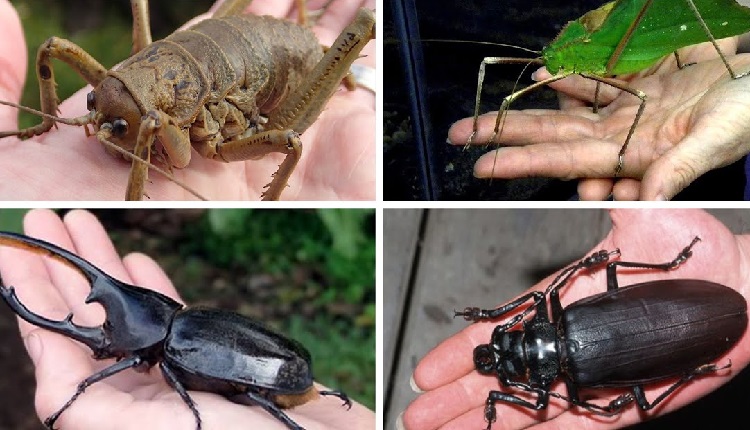
So, instead of boring you with a huge species catalog, let’s focus on the five orders, Coleoptera, Diptera, Hymenoptera, Hemiptera, and Lepidoptera.
Coleoptera is the group that contains all the beetles, and to be a beetle, the insect must have a hardened pair of wings that cover and protect a second pair of wings underneath.
Next up is the group Diptera which includes flies with a second pair of wings that they use solely for balance and guidance. You can blame these wings because you can’t seem to swat flies away.
The Hymenoptera group includes bees, wasps, and ants. Although bees and wasps seem very different from ants, they have two sets of wings locked together with hooks. And you’re probably thinking, do ants have wings? Well, yes, male and queen ants have wings!
Hempiteras are bugs with mouthparts that they can use to suck up fluids from plants or other insects; it’s disgusting, right? Hempiteras also have a first pair of wings that are hardened at their base with a thin membraneous wing at the end.
And lastly, the Lepidoptera, which, in my opinion, are the prettiest insects as this group contains moths and butterflies.
Habitat and Distribution
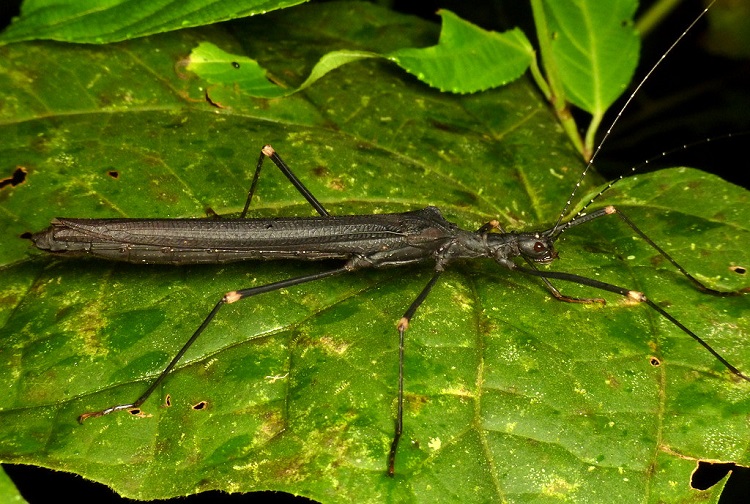
Insects live absolutely everywhere; literally, anywhere food is available, an insect will live. Can you really blame them?
There is even an insect in Antarctica, the Antarctic midge, which happens to be the continent’s largest native land animal. And when I say large, I mean 2-6mm, which just goes to show how adaptable insects can be.
How Many Insects Are in the World?
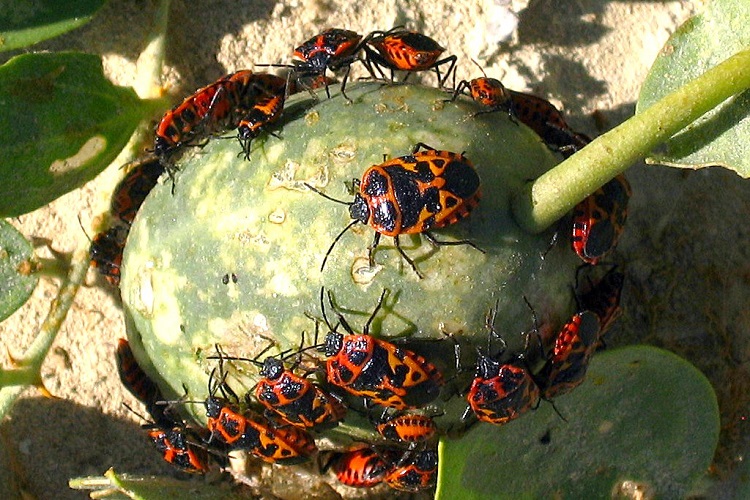
It’s extremely difficult to give an exact figure of how many insects are in the world, as scientists haven’t yet been able to describe many species.
We can estimate, however, that there are around 950,000 described species, but the actual number could be significantly larger. Keeping in mind the number of species there are, scientists have suggested that there are 10 quintillion insects living on Earth at any given time.
Did you know that beetles reign supreme as the most abundant creatures on our planet? Astonishingly, they account for a quarter of all known animal life forms.
External Features
All insects have a head, a thorax, and an abdomen, with the head containing the insect’s antennae, eyes, and mouth, the thorax featuring the three pairs of legs and wings, and the abdomen, which houses the digestive and reproductive organs.
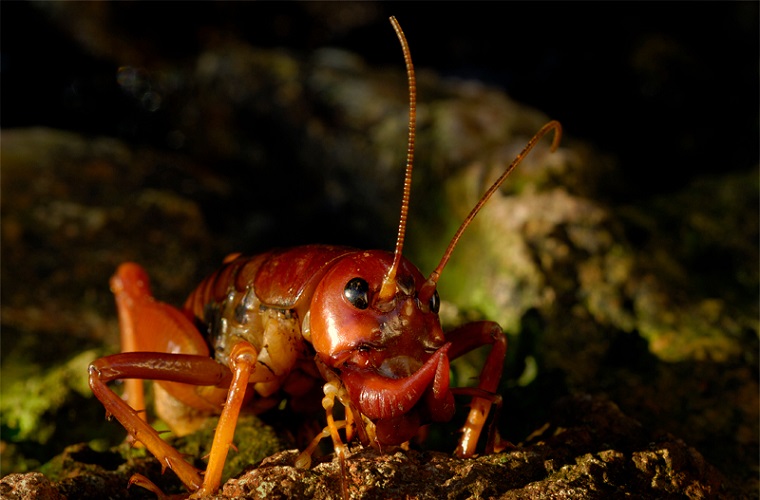
- Cuticle- Cuticle? Isn’t that part of the human nail? Well, yes, it is, but the outer covering of an insect also covers the exoskeleton. An insect’s cuticle provides the bug with muscular support and protects the insect as it grows and develops.
- Head – Most insects have two antennae on their heads that they will use for sensing, holding females while mating, or seizing prey. Their head will also feature a mouth which works very different from ours, as ours moves vertically whereas an insect’s moves horizontally.
- Eyes – Unlike you and I, insects possess two sets of eyes, a larger pair called compound eyes and a smaller pair, which we know as simple eyes.
- Segmentation – We can distinguish insects from other arthropods thanks to their bodies. An insect’s body is split into three sections, the head, the thorax, and the abdomen, which are very visible with just the naked eye.
Next time you see a bug, pay close attention to its body and see if you can spot the three distinct insect body parts.
- Exoskeleton – The exoskeleton is the insect’s external skeleton, which protects and supports its body.
Interesting Insect Facts
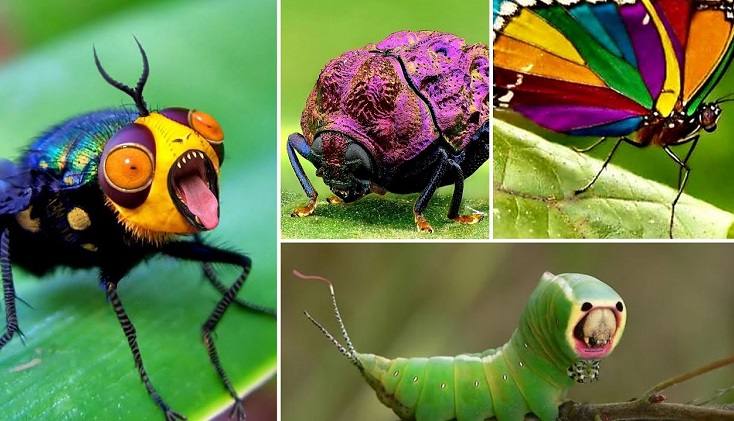
Here are ten interesting facts about insects:
- Ladybirds may seem innocent, but they can actually eat 5,000 bugs in their lifetime. I guess you should never judge a book by its cover.
- Caterpillars have twelve eyes.
- Everyone knows of the dog Laika who went to space in 1957, but did you know that fruit flies were actually the first living animal to break through the Earth’s atmosphere?
- The teeny-tiny ant is the strongest animal globally because it can lift up to fifty times its body weight. Size doesn’t matter, after all.
- The largest beetle in the world, the Titan beetle can grow up to 17 centimeters long.
- Insects are the only invertebrates with wings. (Invertebrates are animals without backbones.)
- In Peru, Panama, and Ecuador, a winged roach species, the Megaloblatta longipennis, can grow up to 9 centimeters long. It’s safe to say I am never ever going to South America.
- For every person, there are 1.4 million ants.
- Mosquitoes are the world’s deadliest animal, as they’re capable of spreading life-threatening diseases with just one bite.
- June bugs get their name because you guessed it, they emerge in June.
Ecology
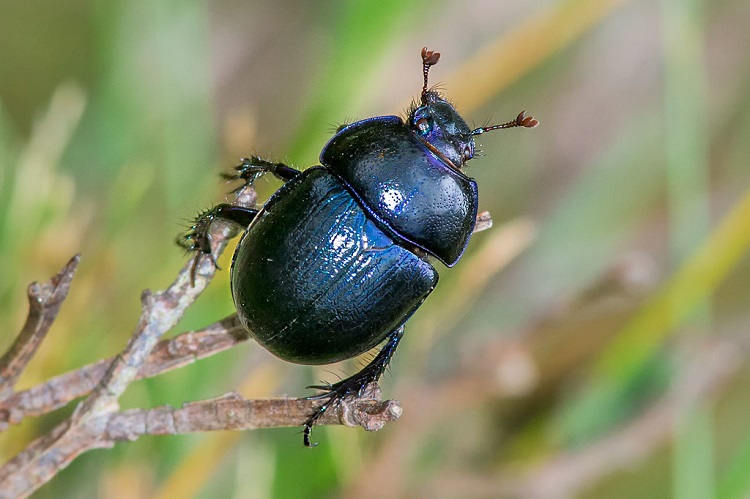
Insect groups play a vital role in the ecology of the world as they recycle nutrients, feed on dead plant matter to make room for new plants to grow, and act as prey for larger mammals, birds, reptiles, and amphibians.
Aquatic Insects vs. Terrestrial Insects
Aquatic insects may not live their entire lives in water, but they will at least live some portion of their life cycle in the water, which is different from terrestrial insects, who spend their entire lives living on the ground.
Like humans, insects need to breathe oxygen, so something aquatic insects have had to adapt to is breathing underwater. To do this, they draw air into their bodies through holes along their abdomens, returning to breathe once the oxygen in their bodies runs out.
An Insects Survival Skills
Being so tiny, insects have had to develop unique survival skills to protect them from other predators and the cold weather that comes with winter.
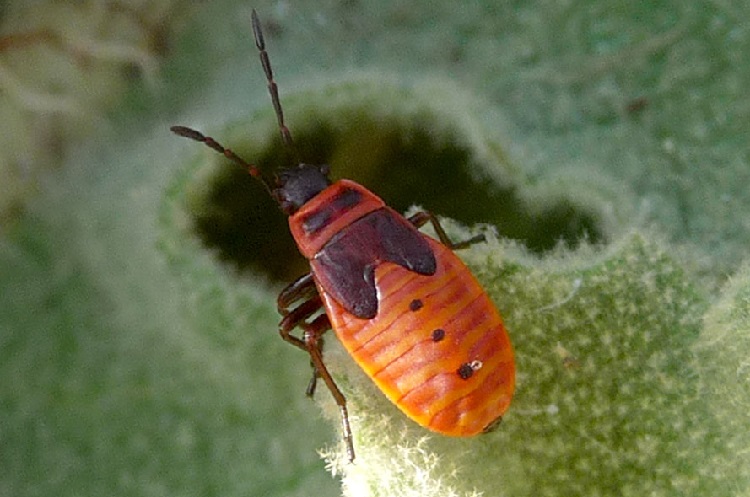
During winter, most insects rely on their freeze tolerance, where the organism will essentially freeze half of its body so it can emerge in springtime, allowing them to live in minus temperatures.
Few species have also developed unique ways of protecting themselves, like producing foul-smelling odors from specialized glands, oozing irritating substances on themselves to avoid predation, or like bees and wasps, stinging predators with venom to cause pain.
Insects may be small, but they definitely are mighty.
Predation
When I was younger, I always believed that insects were herbivores who ate plants and nothing else, but after immersing myself in various animal documentaries, I realized that insects are quite the opposite.
Many insect species are herbivores, but there are some that prey on other insects. Predatory insects play a vital role in insect pest control, as without them, insects like termites, ticks, and fleas, would take over ecosystems and wreak havoc on the world.
Pollination
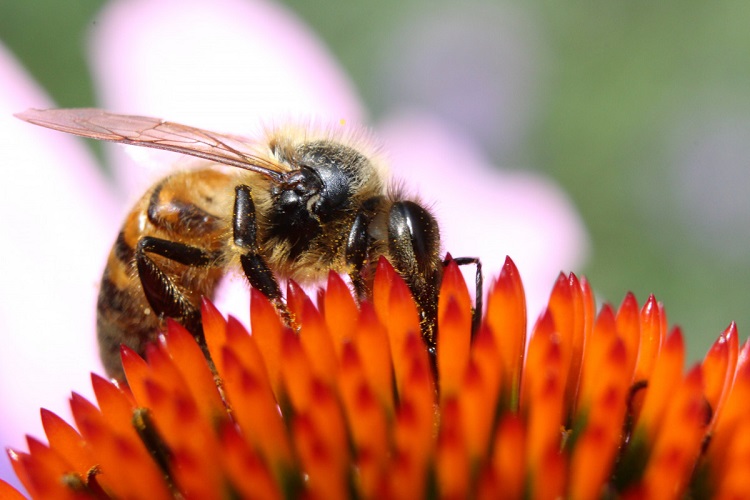
Another important role for insects is pollination, as, without insects like butterflies and bees, the world’s plants and crops would not be able to survive.
Did you know that honey bees, for example, pollinate roughly 80% of all pollinating plants?
Parasitism
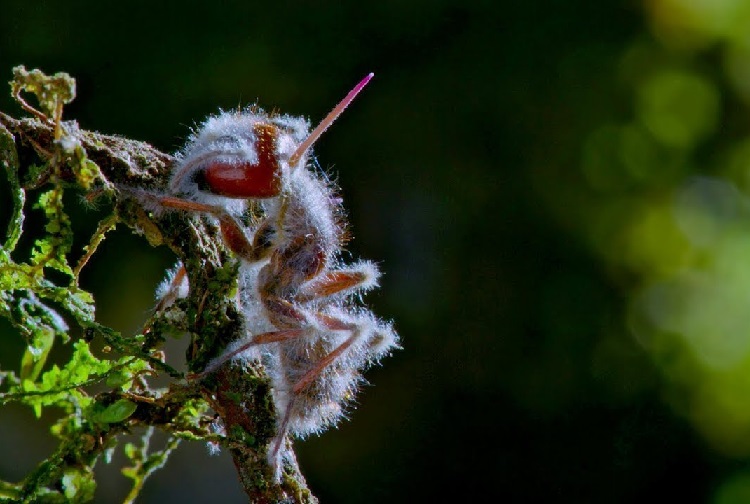
Paratisim is the relationship between two species. However, this relationship isn’t 50/50, and it doesn’t benefit both parties because the parasite is the only one who benefits and usually harms the host in the process.
Fleas, lice, and parasitic wasps are three of the most well-known examples, and if your dog has had fleas or if you have had lice, then you’ll know how annoying these insects can be.
Physiology
An insect’s physiology is how insect lives and functions, and although there are around a million species of insects, they’re all very alike internally and externally.
Nervous System
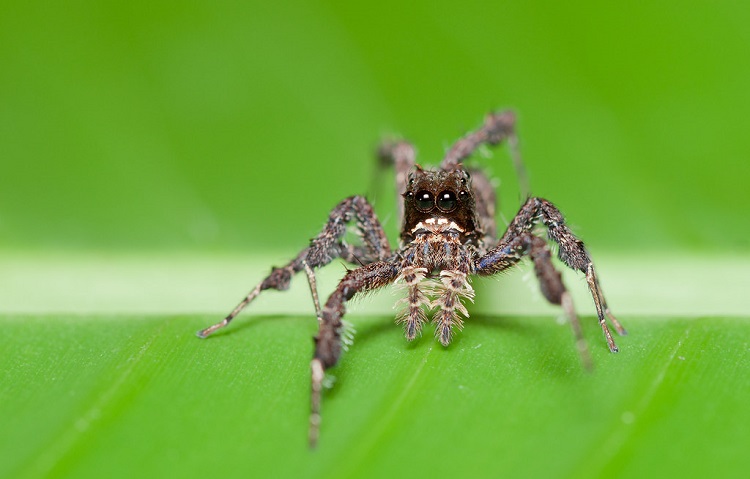
Insects, like us and other vertebrates, have a central nervous system, but theirs is slightly different as they have a brain, a ventral nerve cord, and subesophageal ganglion, which are nerves that run down the insect’s body past its esophagus.
Digestive System
Insects use their digestive systems to extract nutrients from their food, and their digestive tract consists of a foregut, a midgut, and a hindgut. The foregut stores and grinds the food before transporting it to the midgut, where digestive enzymes break down the food and extract precious nutrients for the insect’s body to absorb.
After the food has run through both the foregut and the midgut, it travels down to the hindgut, where the insect absorbs salt and water from the food before the remaining product is finally excreted.
Excretory System
The process of insect pooping is a bit more complicated than it first seems; in most animals, water is needed to remove toxic metabolic waste, but for tiny insects, all water they ingest is vital to their survival.
Instead of using water to remove the waste, an insect’s body produces uric acid, so insects can instead excrete non-toxic uric acid granules. Pretty gross but fascinating at the same time, isn’t it?
Respiration
Insects don’t have lungs, so instead, they accomplish respiration with internal tubes and sacs that deliver oxygen directly to their tissues.
So, how do insects initially take in that air? Well, insects have spiracles that are openings along their bodies through which oxygen can enter the body and carbon dioxide can exit.
Circulation
Your blood carries oxygen around your body, but in insects, their blood, which makes up 25% of their overall weight, carries hormones, nutrients, and waste.
The red blood cells in our blood are what carries the oxygen around our bodies, but an insect’s blood doesn’t contain red blood cells, eliminating its oxygen-carrying capabilities.
Reproduction and Development
Insects have reproductive systems, but the shape, size, and number of glands, for example, differ from insect group to group. Female adult insects produce eggs while also storing male sperm until their egg is ready to be fertilized.
The males’ reproductive system’s role, on the other hand, is to produce and store sperm before transporting it to the female’s reproductive tract.
Types of Metamorphosis
There are three different stages of metamorphosis that an insect can go through, and those three stages are ametabolous, hemimetabolous, and holometabolous.
- Ametabolous is little or no metamorphosis, and when these insects emerge from their eggs, they essentially look like adults, just smaller, and will molt and grow until they reach their sexual maturity.
- Hemimetabolous is a gradual metamorphosis where insects go from an egg to a nymph to an adult.
- Holometabolous is a complete metamorphosis with four life stages – egg, larva, pupa, and adult, all of which give the insect a distinct appearance.
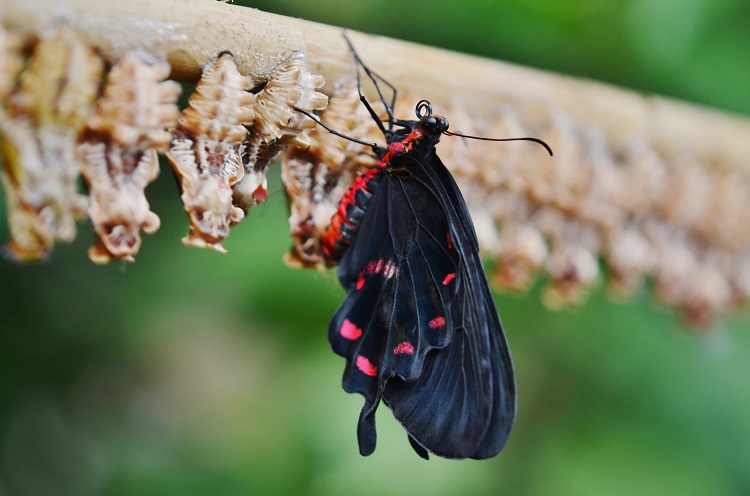
Types of Larvae
Insects that undergo complete metamorphosis, which is a large percentage, will go through a larvae stage where they will feed and grow until they reach their pupal stage.
Insect larvae look very different from their adult forms, and they will be one of five types: Eruciform, Scarabaeiform, Campodeiform, Elateriform, or Vermiform.
Role of Hormones
Hormones in insects are vital as they help insects develop, molt, metamorphose, and reproduce.
Sensory Perception and Reception
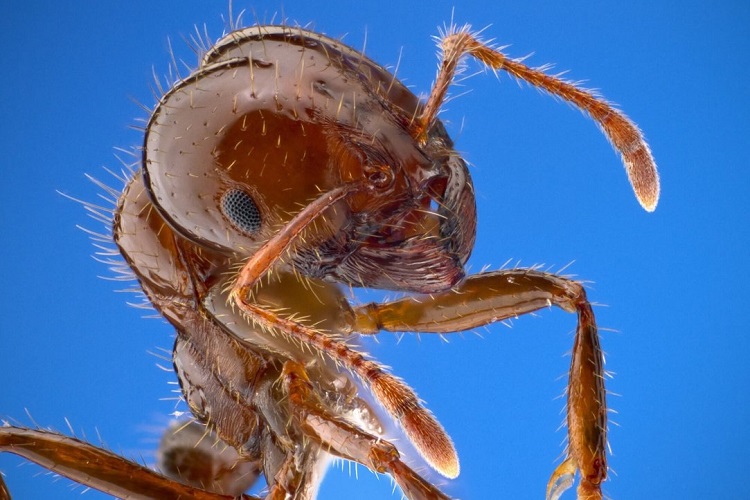
Many insects have incredible perception and reception; for example, bees are aware of ultraviolet wavelengths, and some male moths can detect female moth pheromones over vast distances.
Vision and Light Production
Bioluminescence is a pretty cool party trick, and some insects, like fireflies, can produce flashes of light to attract mates or lure prey. Some larvae in caves have gone as far as to produce light to attract flying insects which then get stuck in sticky strands of silk.
Most insects can perceive light and dark as well as infrared, visible light wavelengths, and ultraviolet, but although they can see things we humans can’t, our eyesight is still 100 times better than most insects.
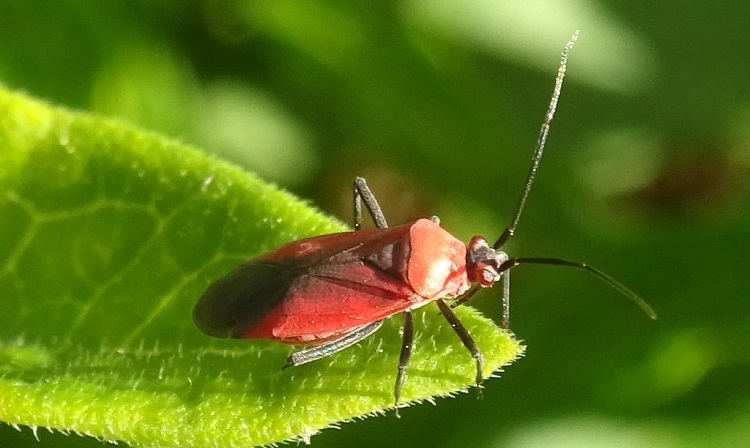
Sound Production, Hearing, and Touch
As insects were the first land animals, they were the first organisms to produce and sense sounds, which is pretty impressive if you ask me. The way insects make sounds are by rubbing or hitting their body parts together; the grasshopper, for example, rubs its hind legs together.
Of all the insect species, cicadas make the loudest sounds by contracting a muscle which then bends to make a clicking sound.
When it comes to an insect’s hearing, some insects can hear high frequencies; however, for the most part, communication between insects is typically through vibrational signals, as insects can sense and feel vibrations through surfaces.
Chemical Communication
Many insects have developed chemical means for communication along with sounds and vibrational signals.
- Pheromones are a type of chemical that insects use to attract mates of the opposite sex, deter other insects from approaching, and for marking a trail.
- Allomones affect the behavior of another species to help benefit the insect emitting the chemical.
- Kairomones affect the behavior of another species to benefit the insect receiving the chemical.
- Synomones benefit both the emitter and the receiver.
Insects use chemicals for communication between the same species or across other species.
Social Behaviour
Some insects, like ants, bees, and termites, are social insects that live together in colonies. One social insect, the honey bee, has even developed its own unique dance to communicate with other bees about the environment and where to find good food sources.
Devoted Mothers
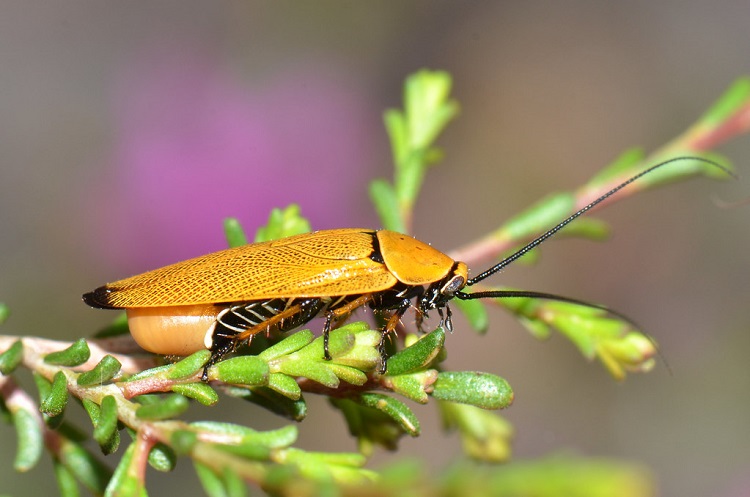
Some insects are doting mothers who build nests, lay eggs, protect their eggs, and feed their offspring, some insects lay their eggs and leave, and some insects fall somewhere in the middle and build nests, fill them with food, and lay their eggs on top of it before heading off.
As many insects live very short lives as adults, they rarely come into contact with other insects unless it’s time to mate.
Insect Societies
Insect societies are large families of insects that are all the offspring of a single female and who divide up tasks to succeed.
Take the honey bee, for example; female workers head out to collect pollen and nectar, different males feed on honey until it is their time to mate with the queen, and the queens lay thousands of eggs daily to boost the colony population.
Instincts
Although insects only have a small number of neurons in their central nervous system, they display instinctive behavior that occurs without learning or memory.
Locomotion
Insects can either fly, walk, or swim. Some can even do all three!
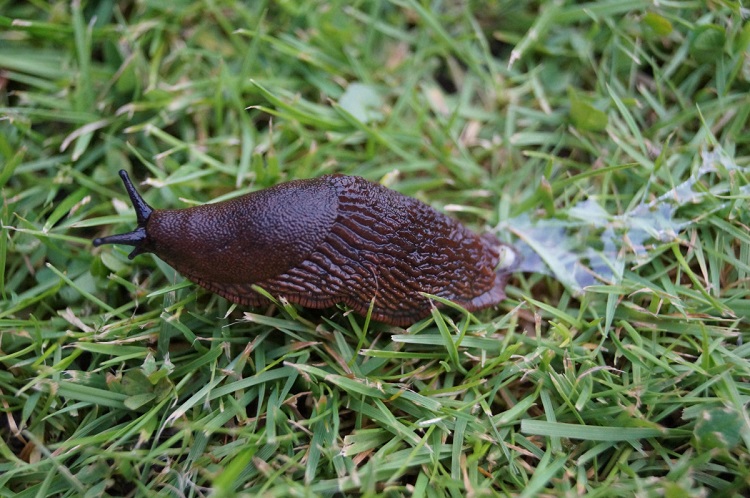
Flight
Of all the invertebrates in the world, insects are the only group to have developed flight. Go insects! Some scientists believe that insect wings evolved from modified gills or spiracular flaps, but the exact origin is unknown, as insects evolved over 300 million years ago.
To fly, an insect flaps and vibrates its wings, often relying on prevailing winds to help them along with its journey.
Walk
Insects use their six jointed legs for walking, and how they walk allows them to do so at a rapid speed. Well, rapid for an insect, that is. The insects take steps in a triangular formation, always having three legs on the ground at all times.
Swim
A fair few insects spend at least some part of their life underwater; therefore, they need to know how to swim and have adaptations like legs or appendages that are suitable for paddling or legs that allow them to walk on water.
Relationship with Humans
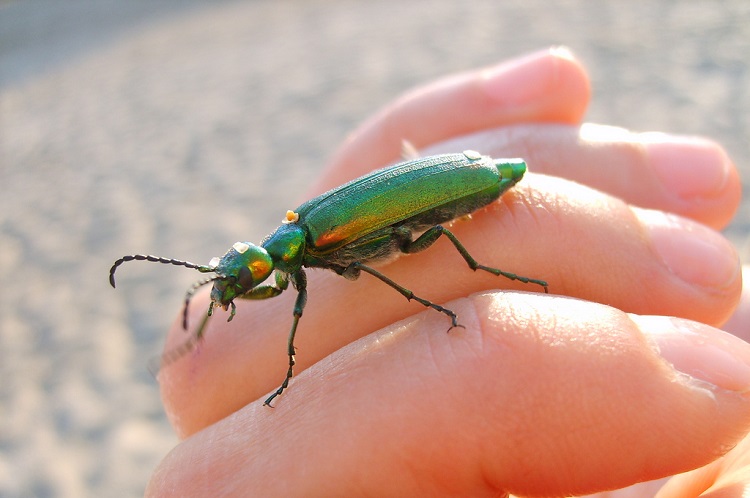
As long as humans have been alive, we have had relationships which insects, and we will continue to until we are wiped off the planet completely.
As Pests
Humans often see insects as pests, and for the most part, the name pest is given to invasive species that destroy agricultural goods or damage homes and structures.
Although it would be nice to eliminate these pesty species from our lives, insecticides can cause great damage to other organisms and animal species, for example, when DDT killed off most of the Peregrine falcon population in northern America.
In Pollination and Agriculture
Even if you think of insects as pests, you can’t deny that some insects, like bees, butterflies, and wasps, do an incredible job of pollinating flowers and plants. When insects gather nectar and pollen from one plant, they spread that pollen to the next plant they land on, allowing plants to pollinate and reproduce.
Without insects, we wouldn’t have the healthy crops we do, and if we continue to destroy habitats and kill off pollinators, our food supplies would quickly dwindle.
Food and Other Products
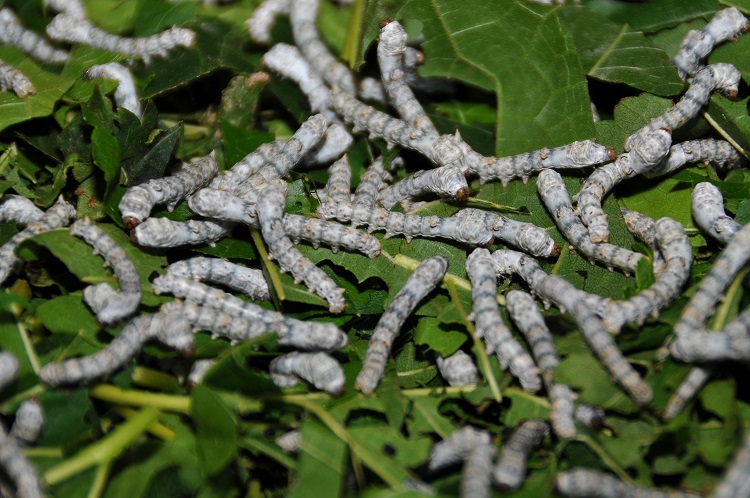
If you like honey, then you have insects to thank. And if you use wax, silk, or the wood varnish lacquer, then again, say your thanks to insects.
For thousands of years, humans have consumed honey that hard-working honey bees produce in their hives, and I’m sure we will continue to do so for thousands of years to come.
And because of silkworms, the larvae of the silk moth, we have the silk industry, which initially formed relationships between China and the rest of the world.
Many cultures around the world even consume insects themselves as part of their diets, like in Africa, where termites and locusts are common food sources. Some would even go on to say that deep-fried cicadas are a delicacy. I can’t say it would be at the top of my cravings list, but each to their own.
In Medicine
Let me tell you, you probably didn’t want to be wounded in the past because hospitals once used insects, like maggots, to treat wounds and prevent the spread of gangrene. I really don’t know what’s worse.
As Pets
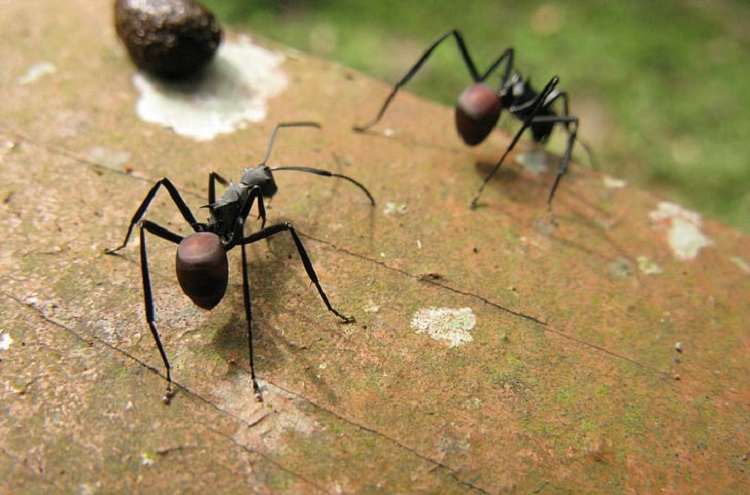
Many people like to keep insects as pests, from cockroaches and ants to crickets and stick insects. During my first year of high school, we had stick insects at school to look after, they didn’t need much-taking care of, but they were very cool to look at.
As Feed
Farmed animals regularly eat insects as part of their diet, as insects like houseflies and maggots are processed and placed in feed for chickens, pigs, and fish.
In Culture
As insects have been around for millions of years, it shouldn’t be shocking to know that they have been spoken about and even respected in some cultures.
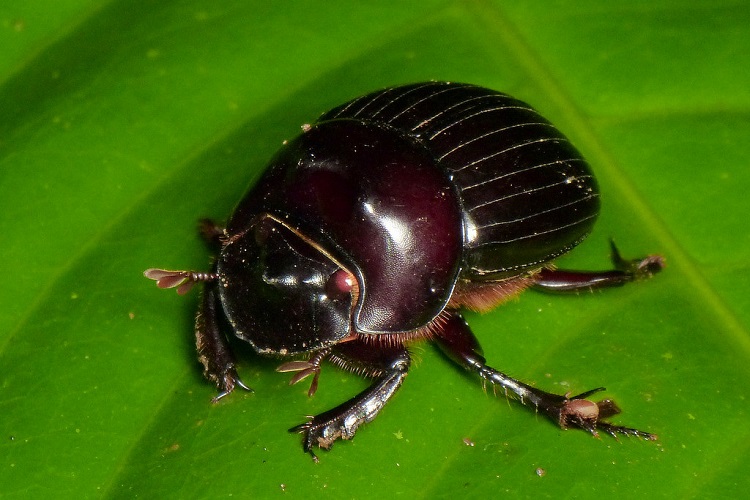
- In Egypt and Greece, the Scarab beetle held cultural and religious symbolism, with some placed in the tombs of ancient Egyptians.
- Ancient China saw Cicadas as a symbol of immortality.
- For the Aboriginals of Australia, Witchetty grubs and Honey ants were used for personal clan totems.
- The “San’ bushmen of the Kalahari believe the Praying mantis was significant in creation.
Conclusion
Insects are some of the smallest animals on this planet, but they play a huge role in ecosystems, keeping our crops healthy and acting as a food source for larger animals.
I’m starting to now think that even though insects give me the heebie-jeebies, maybe they aren’t so bad after all.












